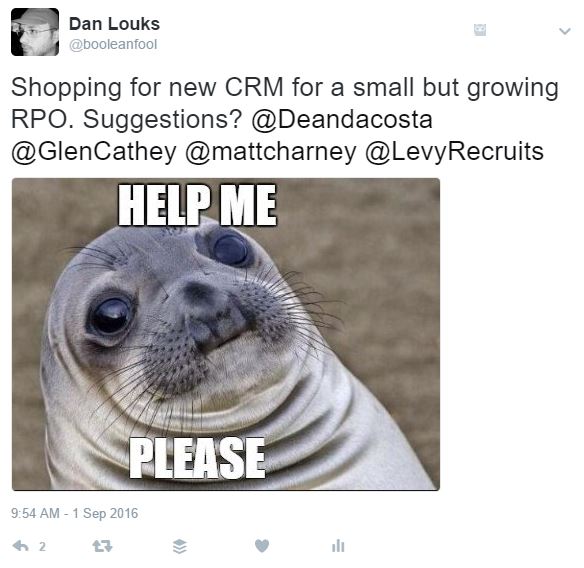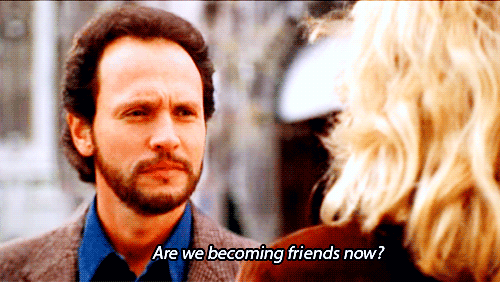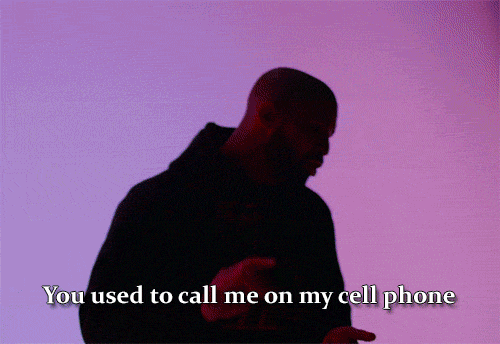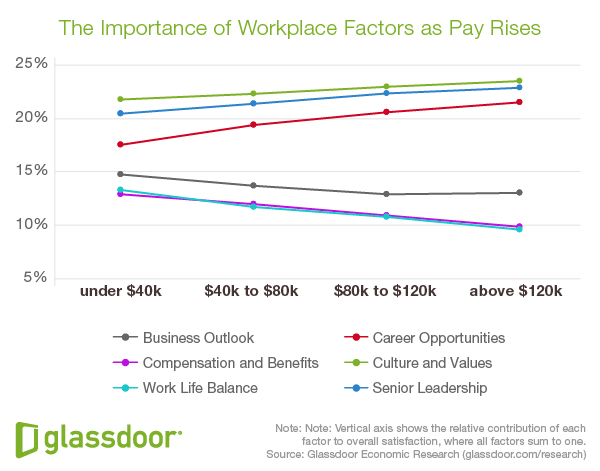 Given how hard it is to hire qualified developers and engineers in the first place, much less in Silicon Valley, where the laws of supply and demand for tech talent have created a candidate driven market, recruiting tech talent isn’t easy.
Given how hard it is to hire qualified developers and engineers in the first place, much less in Silicon Valley, where the laws of supply and demand for tech talent have created a candidate driven market, recruiting tech talent isn’t easy.
And recruiting top engineering talent can be damned near impossible, particularly when those candidates have the luxury of choosing from so many employers of choice, all of whom are after more or less the same set of skills and experience.
On the employer side, this means beggars truly can’t be choosers, and the finite supply of competent coders means most companies have resigned to the fact that not every new hire can be a home run.
LinkedIn, though, is fighting this conventional wisdom with a strategy that’s either absolutely brilliant or a complete waste of time, resources and brand equity.
Of course, LinkedIn has the luxury of all the time int he world, all the resources those Microsoft billions can buy, and they have no need to worry about brand equity, considering they’ve more or less squandered it all already.
Which makes their newest tech hiring initiative so damned interesting.
Temporary Insanity: “You’re Hired” (Kinda).

I know what you’re thinking: “What halfway competent software engineer in the world would even consider working at LinkedIn?”
Meet LinkedIn Reach, the perfect next step in your climb up the engineering career ladder. It sounds like a perfect match if you are both ambitious and passionate about programming, but also willing to settle for a second tier Microsoft subsidiary. If you want to write kick butt code, but don’t mind keeping that code confined to a pretty boring B2B “professional network,”and you’re a big picture thinker, but also think LinkedIn is a long term career destination, then you’re in luck.
Sounds like you’re ready to reach for LinkedIn Reach, and likely want to know where to apply for what sounds like a dream job.
Not so fast, my friend. See, before you channel your passion, and before you build the future (barf) there’s a catch, and it’s kind of a big one.
Because the LinkedIn “Reach” program is a stretch, even for those guys. You see, it’s not really a recruiting initiative at all, at least not technically – because, you see, this program is not, in fact, a job. It is a paid apprenticeship. Yes. Like in the olden days of guilds and indentured servitude.
LinkedIn is apparently trying to revolutionize tech recruiting by reviving the Industrial Revolution. At least Hollywood agencies and Congress give their interns college credit in exchange for “experience” no qualified candidate probably needs to begin with.
Washing Windows: Microserfs and Wage Slaves.
 Of course, in those cases, it’s a brand that looks good on a resume and one you want to be associated with.
Of course, in those cases, it’s a brand that looks good on a resume and one you want to be associated with.
If you’re an engineer looking to build a career, LinkedIn might not have even that minimal value exchange to offer for programming peasantry, but that’s irrelevant. They are a fully owned subsidiary of Microsoft, much like Minecraft or Bing, which is totally worth it.
Until you read the fine print:
“REACH is a six-month apprenticeship program where you will be placed on one of our functional engineering teams, learn from our managers, and develop applications at scale.
You will gain insight into what it’s like to work as a software engineer at LinkedIn and gain experience that will be leveraged for a future career in software engineering.”
Of course, if you prove that you can cut it and successfully complete the program, you’ll be rewarded with an offer for a full time engineering role at LinkedIn. This sounds suspiciously like a standard internship, but you don’t have to be enrolled in any sort of computer science or technical program to qualify for this one.
Nope. Just desperate, willing to learn and think exploitation is a fair price to pay for experience. Roll up your sleeves and suck it up, and trust LinkedIn to recognize and reward your short term sacrifice with a long term opportunity
Because if there’s one thing that company would never do, it’s screw someone over, right?
Recruiters, you might want to take a look at LinkedIn Reach, because in addition to broadly redefining career training, professional development, college recruiting and tech talent attraction (among other disparate disciplines) through what sounds like a proprietary coding boot camp, this experiment is also noteworthy for another reason.
LinkedIn, it seems, is publicly declaring that they consider the ability to find and develop non-traditional candidates to be a viable talent strategy with the potential to create competitive advantage without the associated costs or intensive resource requirements.
By implementing Reach, in short, even LinkedIn is admitting that you can’t find the best candidates on LinkedIn alone, and that someone’s online profile might not be the best way to source, screen and slate potential hires. Which, for me, is kind of the kicker.
Even LinkedIn Doesn’t Use LinkedIn.

I mean, every day, on every freaking social network, it seems like there is some silly article talking about LinkedIn – the good, the bad, the ugly and the indifferent, if there’s one thing that they are noteworthy for, it’s notoriety.
And, of course, controversy. Love them or hate them (and there seems to be no in between in recruiting), when we talk about talent attraction today, LinkedIn is inevitably going to come up at some point in the conversation.
This makes sense, since for better or worse, no recruiter can ignore LinkedIn completely. It’s the elephant in the interview room, the 800 pound gorilla of sourcing, the SaaS version of Goldman Sachs: feared, loathed but so ubiquitous it’s inescapable.
Recruiters take note. By implementing this program, this should be enough evidence that the best candidates are not on LinkedIn. For me, this is the kicker. Every freaking day, on every social network, there is some stupid article talking about LinkedIn.
Love them or hate them, when talking recruiting, LinkedIn is bound to come up in the conversation.
That even extends to the countless conversations about hiring coders, developers, engineers and computer scientists. There aren’t many to find, obviously, and those that are out there are likely have already been found – and bombarded – by the many recruiters out there desperately hunting for anyone minimally qualified for the “opportunities” that go unfulfilled.
For some reason, though, conventional wisdom seems to suggest that LinkedIn is an actual solution to one of the toughest challenges in the talent business.
It is counterintuitive to assume that LinkedIn, a site that’s not exactly known for its cutting edge technology or killer code and innovative design, would be a place that passive tech professionals would voluntarily spend time on, much less publicly share their information with hundreds of thousands of recruiters.
LinkedIn Is For Luddites: Why “Professional Networks” Don’t Work For Techies.
 If you’ve ever done tech recruiting, you know that most of these candidates intentionally avoid interacting with recruiters as a rule, much less voluntarily subject themselves to a deluge of “opportunities” that are anything but. It is naive to believe that all, or even most, IT talent will have a profile on LinkedIn, much less one that’s actually up to date.
If you’ve ever done tech recruiting, you know that most of these candidates intentionally avoid interacting with recruiters as a rule, much less voluntarily subject themselves to a deluge of “opportunities” that are anything but. It is naive to believe that all, or even most, IT talent will have a profile on LinkedIn, much less one that’s actually up to date.
There seems to be a belief among many recruiters that by ponying up enough money for a LinkedIn recruiter license, somehow all those missing profiles will suddenly appear, ready to be packed into your pipeline.
The fact of the matter is, LinkedIn isn’t hiding these people because you haven’t paid for premium access. They’re not hiding at all. They’re just not there. Period.
When recruiters discuss LinkedIn, inevitably, they will blame the platform for the fact that it’s hard to find tech candidates there, and that it’s an ineffective tool. If they paid money with the hopes that they’d see a significant return on their recruiting investment, however, then the fault lies largely with the employer, not the software.
Sourcing is all about research, and if you can’t do enough due diligence to prevent wasting money on a paid sourcing tool, then the tool is pretty obviously not the fundamental problem with your talent function. Of course, even its competitors aren’t really great options for uncovering potential passive candidates.
Even those sites like GitHub, Stack Overflow and Sourcing.io, which focus exclusively on tech and attract a much more targeted, much more engaged audience of IT pros than a general “professional network” like LinkedIn or Facebook, still don’t have nearly enough candidates to come close to meeting the needs of most tech recruiters or employers. And it’s not like anyone on these sites is a “hidden gem,” given how many companies leverage these sources for their tech recruiting efforts.
I get it. I’ve spent most of my career as a tech recruiter, and it can be tough. At its best, it’s never easy – and you learn to always expect the worst. You win some, you lose most, and you deal with a ton of frustration and dead ends along the way. That’s how this business has always worked, and has since well before LinkedIn was even invented.
Tech talent has always been hard to hire, even if these sites make them (marginally) easier to find.
That’s why I find the role of LinkedIn in tech recruiting so odd. If they truly have access to enough of these candidates to justify paying the high price for their premium product, then why do they have to have a program like LinkedIn Reach in the first place?
I mean, if you could truly find the proverbial diamonds in the tech rough simply by searching their platform, then this program is specious, not interesting or innovative. If the product delivered as promised, LinkedIn shouldn’t have to do a damn thing to recruit engineers. In fact, the best ones should be coming to them, since their marketing material suggests so many of them spend so much time on site.
That’s a pretty big stretch, but maybe that’s why they call their new initiative “Reach.”
Reach for the Stars: LinkedIn Looks Outside.
And it’s a similar reach to believe that this program is going to solve anything beyond a temporary talent shortage; it’s a short term fix that’s sure to backfire, no matter how optimistic the company may seem. The reason is that the existence of an apprenticeship program sounds suspiciously like it’s screwing over the same people whose only incentive is to get on at LinkedIn full time.
If they’re willing to make that sort of commitment to the company, it’s interesting that the company doesn’t seem to be reciprocating that interest. In fact, LinkedIn is clear that acceptance into this program will not necessarily equate to a full time job, even if they successfully complete the Reach program and satisfy its requirements.
Sure, they get paid a pittance, but ultimately, LinkedIn has little to no risk involved whatsoever. Unlike employees or even contractors, participating in this sort of “program” carries no protections, guarantees, workplace protections or possibility for remediation.

The reason is that these aren’t jobs at all, at least not beyond the 6 months the program lasts – essentially, a self contained probation period.. This sounds like a great deal for LinkedIn. For the “lucky” techies chosen for the program, it sounds like a Faustian bargain at best, selling their souls for a foot in the door at a place that should be opening those doors and rolling out the red carpet instead.
I am doubtful that a company with the sort of, uh, cache and reputation in tech circles as LinkedIn can ever successfully implement this sort of program, all things considered – Google might be able to get Owen Wilson and Vince Vaughn to appear in a feature length employer branding video, but there’s a reason the video interviewing scenes in the film didn’t involve Skype.
Even those guys wouldn’t risk being uncool enough to be associated with Microsoft product lines.
Taking Talent For A Test Drive Is Not A Long Term Solution.
Of course, The Internship, or any internship, is governed by a completely different set of regulations and rules than those involving either employees or, in this case, “apprenticeships.” Apprentices are basically like H1B workers; those admitted are required to complete the program, but while they’re more or less captive, LinkedIn can give them the boot at any time, with or without cause.
This is important, because apprentices have a full time job, but they are not full time employees. This is ridiculous, because for the chance to maybe get W2 status at LinkedIn, they are essentially doing the same job as actual employees, only without the benefits and pay.
Those good enough to finish the program with an offer from LinkedIn, one can assume, could have skipped that whole process entirely, given the demand for tech talent and the myriad employers who often have more open jobs than qualified candidates to fill them. So, why would anyone opt to audition for LinkedIn instead of immediately joining any of its competitors as an employee instead?
Well, you might not get a job, but apprentices do get some pretty killer perks. These include:
-
Competitive compensation (but not as much as you’d make on a 6 month contract)
-
Amazing benefits (you won’t accrue PTO, but with catered food and gym memberships, you won’t need it).
-
Internal Mentoring (because those who can’t do…)
-
Professional Coaching from BetterUp (because we all know Lynda kind of sucks).
LinkedIn, of course, gets a bunch of employees who are willing to work their butts off for the “right” to work there full time. Those who make it will become employees who already know internal processes, policies and politics – they’re likely going to stick around, too, since there will be few surprises for them after they “officially” onboard.
This is the ultimate temp to perm, try-before-you-buy type of test drive, only in an industry that generally doesn’t get away with this model, considering the competition, industry norms and a perpetually hot hiring market.
But hey, LinkedIn can get away with anything, it seems.
If you can violate your own user agreement and terms of service repeatedly, you can do the same thing with employment agreements, surely. If you can arbitrarily change features, functionality and pricing to customers already under contract, surely you can do whatever the hell you want with a bunch of apprentices after they start the program.
The precedents are set. Now they’re just expanding their habitual exploitation of end users from their product to their people.
The Opportunity Cost of “Creating Economic Opportunity.”
 Sure, apprentices will pick up some practical skills and marketable experience along the way. It’s just that the better they become, the more likely they’ll be to get hired by LinkedIn.
Sure, apprentices will pick up some practical skills and marketable experience along the way. It’s just that the better they become, the more likely they’ll be to get hired by LinkedIn.
This is the goal, but it also preempts them from receiving market value for those skills and experience while eliminating their ability to negotiate or summarily decline a full time offer from LinkedIn, since the company seemingly retains the right of first refusal for program participants once they enter the job market.
I don’t know of many recruiters who would refuse that hiring process – take it or leave it, no counteroffers or competitors. That’s not leveling the playing field. That’s why it’s so offensive that LinkedIn is positioning this program as some sort of corporate altruism, designed to “create economic opportunity.”
They promise a chance at a career in tech regardless of “training or background,” but without those qualifiers, they wouldn’t have a business to begin with.
Ostensibly this apprenticeship approach will benefit underprivileged or underserved populations, but the real “economic opportunity” is to LinkedIn’s bottom line, since there’s no chance for the best candidates completing the program to market their skills and experience to other employers or develop competitive offers beyond the “competitive compensation” promised by LinkedIn.
For all the talk about “creating economic opportunity,” those opportunities seem like they’re limited to one company. The economic opportunities are readily apparent, at least for LinkedIn. For the apprentices in question, the opportunity cost seems questionable, considering the risk/reward ratio involved.
The bigger picture is this: to recruit engineering talent, LinkedIn needed to try something drastically different; while this might not be the answer, it’s clear that even they consider what someone’s done less important than what they’re capable of doing.
It’s promising that this philosophy has been adopted by one of the bigger tech players out there, and one that has long helped define the direction of the entire recruiting industry. It also means even they realize their product has some serious and systematic problems, particularly when it comes to tech recruiting. The good news is that the company appears to have a contingency plan for covering these capability gaps.
And what they’re saying with this pilot program is that top tech talent today can’t be sourced, at least not as a sustainable strategy. It has to be developed. Which means that there’s really no point in sourcing off of LinkedIn at all – especially if you’re a tech recruiter.
Because if they can’t make it work for their own hiring needs, you’re probably kidding yourself if you continue to try to make it work at your company. For the cost of a single license, you could likely fund a Reach pilot program of your own.
Only unlike sourcing on LinkedIn, there’s a chance that might actually lead to an actual hire. Remember: if you need tech talent, cutting the cord on your super pricy LinkedIn Recruiter license is the ultimate “economic opportunity.” And it’s one your company probably can’t afford to pass up.
Because if LinkedIn doesn’t need LinkedIn for recruiting, neither do you.
About the Author: Jackye Clayton is the Editor of RecruitingTools.com. Follow her on Twitter @JackyeClayton or connect with her on LinkedIn.



 About our Author: Dave Curtis has 30+ years experience in the workforce. Of which 18 have been within HR/HR Information Systems. Given the nickname ‘The Wizard’ by his co-workers, Dave is considered a leader, innovator, HR tech professional and overall tech geek. Connect with him on LinkedIn and follow him on Twitter.
About our Author: Dave Curtis has 30+ years experience in the workforce. Of which 18 have been within HR/HR Information Systems. Given the nickname ‘The Wizard’ by his co-workers, Dave is considered a leader, innovator, HR tech professional and overall tech geek. Connect with him on LinkedIn and follow him on Twitter.


 Given how hard it is to hire qualified developers and engineers in the first place, much less in Silicon Valley, where the laws of supply and demand for tech talent have created a candidate driven market, recruiting tech talent isn’t easy.
Given how hard it is to hire qualified developers and engineers in the first place, much less in Silicon Valley, where the laws of supply and demand for tech talent have created a candidate driven market, recruiting tech talent isn’t easy.
 Of course, in those cases, it’s a brand that looks good on a resume and one you want to be associated with.
Of course, in those cases, it’s a brand that looks good on a resume and one you want to be associated with.
 If you’ve ever done tech recruiting, you know that most of these candidates intentionally avoid interacting with recruiters as a rule, much less voluntarily subject themselves to a deluge of “opportunities” that are anything but. It is naive to believe that all, or even most, IT talent will have a profile on LinkedIn, much less one that’s actually up to date.
If you’ve ever done tech recruiting, you know that most of these candidates intentionally avoid interacting with recruiters as a rule, much less voluntarily subject themselves to a deluge of “opportunities” that are anything but. It is naive to believe that all, or even most, IT talent will have a profile on LinkedIn, much less one that’s actually up to date.

 Sure, apprentices will pick up some practical skills and marketable experience along the way. It’s just that the better they become, the more likely they’ll be to get hired by LinkedIn.
Sure, apprentices will pick up some practical skills and marketable experience along the way. It’s just that the better they become, the more likely they’ll be to get hired by LinkedIn.
 Somehow, in recruiting, not only do we somehow think we’re marketers, salesmen and strategists simultaneously, it seems that of late, we also fancy ourselves as “hackers.”
Somehow, in recruiting, not only do we somehow think we’re marketers, salesmen and strategists simultaneously, it seems that of late, we also fancy ourselves as “hackers.” Your HR and recruiting data, of course, is no exception. And if you think your employees’ personal information is truly personal, and that your system of record is secure, think again.
Your HR and recruiting data, of course, is no exception. And if you think your employees’ personal information is truly personal, and that your system of record is secure, think again. Not every incident, of course, is caused by state actors or international espionage. While state sponsored hacks have rightfully dominated the headlines (unless, of course, you live anywhere in Russia), the fact is that when focusing on your own network security, fully 53% of all enterprise breaches come from “internal actors,” not outside threats.
Not every incident, of course, is caused by state actors or international espionage. While state sponsored hacks have rightfully dominated the headlines (unless, of course, you live anywhere in Russia), the fact is that when focusing on your own network security, fully 53% of all enterprise breaches come from “internal actors,” not outside threats. They were also among the least likely to violate those policies – only 14% of enterprise incidents were caused by contractors,
They were also among the least likely to violate those policies – only 14% of enterprise incidents were caused by contractors,  Compliance audits, the biggest fear of many HR leaders and employers alike, is by any means, an irregular occurrence at best. According to the
Compliance audits, the biggest fear of many HR leaders and employers alike, is by any means, an irregular occurrence at best. According to the  While identity theft impacts around 3 million consumers a year, costing them an excess of $15 billion dollars according to recent estimates from Javelin Strategy’s
While identity theft impacts around 3 million consumers a year, costing them an excess of $15 billion dollars according to recent estimates from Javelin Strategy’s 

 That so many C Level Executives are so concerned about personally identifiable data in general, and confidential employee information in particular, represents an ideal opportunity to finally get that elusive seat at the table so many HR practitioners have been pushing for (or more accurately, pining about) for so long.
That so many C Level Executives are so concerned about personally identifiable data in general, and confidential employee information in particular, represents an ideal opportunity to finally get that elusive seat at the table so many HR practitioners have been pushing for (or more accurately, pining about) for so long.
 Throughout the course of my career, I’ve found myself involved in a seemingly infinite amount of existential (and extraneous) coversations about just how stupid candidates thought recruiters really were, a sentiment those recruiters on the other side of the table seem to share when it comes to candidates. Recruiters can talk at length about how much they hate working with job seekers, as a rule; just as pervasive and problematic is that those job seekers treat recruiters as more of a necessary evil than anything else.
Throughout the course of my career, I’ve found myself involved in a seemingly infinite amount of existential (and extraneous) coversations about just how stupid candidates thought recruiters really were, a sentiment those recruiters on the other side of the table seem to share when it comes to candidates. Recruiters can talk at length about how much they hate working with job seekers, as a rule; just as pervasive and problematic is that those job seekers treat recruiters as more of a necessary evil than anything else.
 Hey there!
Hey there! Dear Sir or Madam:
Dear Sir or Madam: About the Author:
About the Author:








 About our Author:
About our Author:
 Over the years, one of the many things I’ve given quite a bit of thought to is the relationship between recruiting and sourcing, and how these functions fit in with the bigger talent acquisition picture. At first glance (for those outside our industry), we all pretty much look the same.
Over the years, one of the many things I’ve given quite a bit of thought to is the relationship between recruiting and sourcing, and how these functions fit in with the bigger talent acquisition picture. At first glance (for those outside our industry), we all pretty much look the same. Between candidate communications, researching candidates online or simply spending copious amounts of time inside of an ATS, the paths of recruiters and sourcers cross fairly frequently. For sourcers, their focus lies in scouring the far ends of the interwebs for essential information like a candidate’s email address, contact information and personal profiles.
Between candidate communications, researching candidates online or simply spending copious amounts of time inside of an ATS, the paths of recruiters and sourcers cross fairly frequently. For sourcers, their focus lies in scouring the far ends of the interwebs for essential information like a candidate’s email address, contact information and personal profiles. By requiring everyone on your recruiting team to manage a full desk instead of subdivide searches, every recruiter would have responsibility for fewer reqs, since they’d be better spread out. Having everyone take accountability for full cycle recruiting would not only create fewer positions per capita, but creates more time for each member of your talent team to focus on the stuff that matters. You know, take a (gulp…yes) much more “strategic” approach to recruiting and hiring. The result is quality here, folks.
By requiring everyone on your recruiting team to manage a full desk instead of subdivide searches, every recruiter would have responsibility for fewer reqs, since they’d be better spread out. Having everyone take accountability for full cycle recruiting would not only create fewer positions per capita, but creates more time for each member of your talent team to focus on the stuff that matters. You know, take a (gulp…yes) much more “strategic” approach to recruiting and hiring. The result is quality here, folks.

 I hear a similar refrain from more than a handful of corporate recruiting leaders I’ve spoken with over time: “I never hire recruiters who don’t have agency experience.”
I hear a similar refrain from more than a handful of corporate recruiting leaders I’ve spoken with over time: “I never hire recruiters who don’t have agency experience.” Of course, with any hypothesis, this strategy is by no means an absolute; like most theses, there are probably a ton of logical holes or aphoristic anecdotes that undermine my central argument.
Of course, with any hypothesis, this strategy is by no means an absolute; like most theses, there are probably a ton of logical holes or aphoristic anecdotes that undermine my central argument. About the Author: Pete Radloff has 15 years of recruiting experience in both agency and corporate environments, and has worked with such companies as Comscore, exaqueo, National Public Radio and Living Social.
About the Author: Pete Radloff has 15 years of recruiting experience in both agency and corporate environments, and has worked with such companies as Comscore, exaqueo, National Public Radio and Living Social.
 We constantly hear stories about bad experiences by candidates. And not just about the lack of personalization in the pipelining process. I personally sent out over 600 resumes in a 10-month period while exploring a change in employment. For the metrics freaks out there I received back 62 personal (or HRIS system) responses and 38 “your qualified we are passing on you” emails. I also received 12 email and 7 phone calls that converted to 3 interviews. During that same time, I had 3 organizations interview me because of referrals. I also had 4 recruiters find me unsolicited and that converted into 2 interviews.Only half the experiences where I interviewed would get a passing grade and 1 would get an “A” if I was grading the experience.
We constantly hear stories about bad experiences by candidates. And not just about the lack of personalization in the pipelining process. I personally sent out over 600 resumes in a 10-month period while exploring a change in employment. For the metrics freaks out there I received back 62 personal (or HRIS system) responses and 38 “your qualified we are passing on you” emails. I also received 12 email and 7 phone calls that converted to 3 interviews. During that same time, I had 3 organizations interview me because of referrals. I also had 4 recruiters find me unsolicited and that converted into 2 interviews.Only half the experiences where I interviewed would get a passing grade and 1 would get an “A” if I was grading the experience.
 Some recruiters will scoff at calling folks afterward. They will tell you they don’t have time. To that I say bullshit. If every job has 6 candidates interviewed in person, then it’s 15-20 minutes to make 5 phone calls. We wasted that on non-valued work on any given day. Schedule a half hour once a week or every other week to let folks down. I have never had a single candidate get mad at me for doing so. In fact, most sincerely appreciate the “human” in human resources instead of a cold letter.
Some recruiters will scoff at calling folks afterward. They will tell you they don’t have time. To that I say bullshit. If every job has 6 candidates interviewed in person, then it’s 15-20 minutes to make 5 phone calls. We wasted that on non-valued work on any given day. Schedule a half hour once a week or every other week to let folks down. I have never had a single candidate get mad at me for doing so. In fact, most sincerely appreciate the “human” in human resources instead of a cold letter. Mark Fogel is a Disruptor in the HR space and known for his HR with an Attitude. With 15 years heading HR at 3 prominent organizations and a slew of National Awards, including the SHRM Human Capital Leader of The Year, he has made a major impact on the Human Capital function. He is also the co-founder of Human Capital 3.0, an HR boutique with some very big clients. Often quoted in national media, Mark is an HR Thought Leader with a unique point of view. He can be reached at
Mark Fogel is a Disruptor in the HR space and known for his HR with an Attitude. With 15 years heading HR at 3 prominent organizations and a slew of National Awards, including the SHRM Human Capital Leader of The Year, he has made a major impact on the Human Capital function. He is also the co-founder of Human Capital 3.0, an HR boutique with some very big clients. Often quoted in national media, Mark is an HR Thought Leader with a unique point of view. He can be reached at 
 It seems counterintuitive to take a step back and challenge the basics of innovation, but all things considered, it seems apropos to pause and wonder exactly when innovation became so, well, stale.
It seems counterintuitive to take a step back and challenge the basics of innovation, but all things considered, it seems apropos to pause and wonder exactly when innovation became so, well, stale. Since I saw nothing even remotely resembling innovation (I voted for a talk to text plugin for enterprise HCM systems for crying out loud), I had to return to the organizers and ask for clarification on what the hell they meant by “innovation,” since we clearly had drastically different definitions for this seemingly simple word.
Since I saw nothing even remotely resembling innovation (I voted for a talk to text plugin for enterprise HCM systems for crying out loud), I had to return to the organizers and ask for clarification on what the hell they meant by “innovation,” since we clearly had drastically different definitions for this seemingly simple word.
 But that’s exactly the premise so many HR and recruiting technologies flooding the marketplace seem to espouse as a viable go-to-market strategy. The trade off, of course, is innovation – no one wants to be a late adopter. But if the fundamental problem is that your operating system – your ATS – is obsolete or cumbersome – then no amount of after market add-ons will make the core user experience any better or more up to date.
But that’s exactly the premise so many HR and recruiting technologies flooding the marketplace seem to espouse as a viable go-to-market strategy. The trade off, of course, is innovation – no one wants to be a late adopter. But if the fundamental problem is that your operating system – your ATS – is obsolete or cumbersome – then no amount of after market add-ons will make the core user experience any better or more up to date.
 Recruiters have a job that, superficially at least, looks pretty easy to pretty much everyone who hasn’t ever actually recruited before.
Recruiters have a job that, superficially at least, looks pretty easy to pretty much everyone who hasn’t ever actually recruited before.


 If you are considering eliminating recruiting, or think self service serves anyone’s best interests, then there are some critical changes you should probably consider trying out before cutting the cord altogether.
If you are considering eliminating recruiting, or think self service serves anyone’s best interests, then there are some critical changes you should probably consider trying out before cutting the cord altogether. Vinayak Ranade is the CEO and co-founder of
Vinayak Ranade is the CEO and co-founder of 
 Let me tell you a story, as told to me by someone involved. Candidate (let’s call him Steve) applies to a company to be a custodian. A few weeks later he applies for a maintenance position in the same company. Steve gets a phone screen for the custodian position but isn’t selected. A few weeks later he gets a phone interview and then an in-person interview for the maintenance department. They love him and make him a verbal offer on the spot.
Let me tell you a story, as told to me by someone involved. Candidate (let’s call him Steve) applies to a company to be a custodian. A few weeks later he applies for a maintenance position in the same company. Steve gets a phone screen for the custodian position but isn’t selected. A few weeks later he gets a phone interview and then an in-person interview for the maintenance department. They love him and make him a verbal offer on the spot. The poor coordinator makes a very good decision and asks Steve to “hold, please” while he tracks down his manager. His manager tells him to call 911. After taking a few deep breaths, the manager gets on the phone and does his best to talk Steve down while simultaneously looking him up in his ATS. He sees almost immediately what happened, but by this point, Steve is in no mood to talk. So he points to the address the company has for Steve, and the coordinator relays that to the police. Within minutes they are knocking on Steve’s door, and he lets them in. The police calmly tell the manager “we’ll take it from here” and hang up the phone.
The poor coordinator makes a very good decision and asks Steve to “hold, please” while he tracks down his manager. His manager tells him to call 911. After taking a few deep breaths, the manager gets on the phone and does his best to talk Steve down while simultaneously looking him up in his ATS. He sees almost immediately what happened, but by this point, Steve is in no mood to talk. So he points to the address the company has for Steve, and the coordinator relays that to the police. Within minutes they are knocking on Steve’s door, and he lets them in. The police calmly tell the manager “we’ll take it from here” and hang up the phone. Irreplaceable
Irreplaceable




 People have always questioned whether
People have always questioned whether 

 Three factors become less important as pay rises: compensation and benefits, work-life balance, and business outlook for the company over the next six months.
Three factors become less important as pay rises: compensation and benefits, work-life balance, and business outlook for the company over the next six months. Three factors matter more to workers as pay rises:
Three factors matter more to workers as pay rises: 
 About the Author: Patrick Wong is a data scientist at Glassdoor. He has developed a variety of marketing tools using statistical models and has contributed to Glassdoor’s understanding of user experience through a variety of analytical research projects.
About the Author: Patrick Wong is a data scientist at Glassdoor. He has developed a variety of marketing tools using statistical models and has contributed to Glassdoor’s understanding of user experience through a variety of analytical research projects.
 In My Day…
In My Day… #HATERS
#HATERS About our Author:
About our Author: 
 While there’s been some slight advances in the tools and technologies available for finding top talent, even the most advanced systems are simply automating what the most effective sourcers and recruiters have always done and will always do, because you don’t need a matching algorithm, machine learning or even any professional certification or credentials to be a kick-ass sourcing pro.
While there’s been some slight advances in the tools and technologies available for finding top talent, even the most advanced systems are simply automating what the most effective sourcers and recruiters have always done and will always do, because you don’t need a matching algorithm, machine learning or even any professional certification or credentials to be a kick-ass sourcing pro. Yeah, I know that “learning agility” sounds like the worst kind of HR buzzword bull$h!t, right up there with “personal branding” and “emotional intelligence.”
Yeah, I know that “learning agility” sounds like the worst kind of HR buzzword bull$h!t, right up there with “personal branding” and “emotional intelligence.” Either you’re an autonomous autodidact or you’re in the wrong business.
Either you’re an autonomous autodidact or you’re in the wrong business.